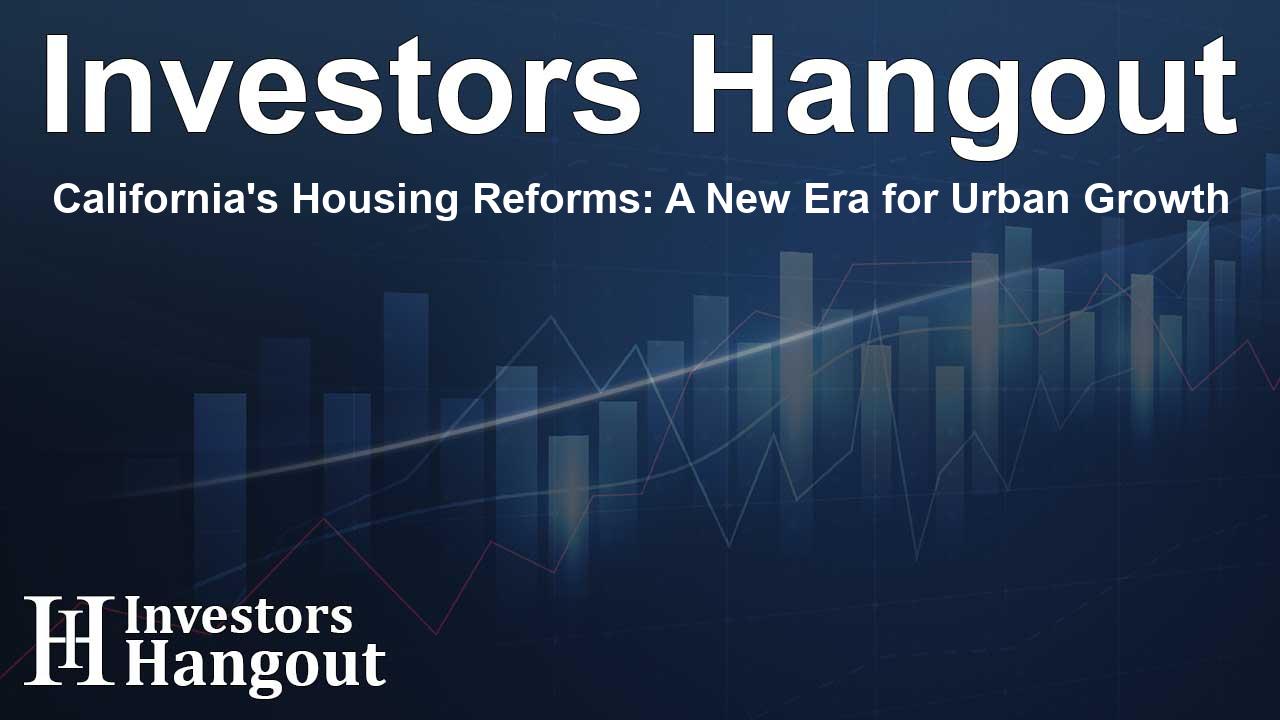California's Housing Reforms: A New Era for Urban Growth

California's Bold Housing Reforms
The landscape of urban development is rapidly changing, and California is at the forefront of this movement. In recent times, significant housing reforms have sparked a new sense of optimism regarding urban growth and accessibility.
Various organizations, such as California YIMBY, have emerged to advocate for these reforms, which are gaining near-unanimous support from lawmakers. This shift illustrates a collective effort to address the housing crisis and make living in urban areas more attainable for many. The latest legislation aims to eliminate restrictive barriers, particularly the California Environmental Quality Act (CEQA), which has often been misused to stall new housing projects.
Transformative Legislation in Action
The governor has recently approved measures that will fundamentally change the approval process for new infill housing developments. Another piece of legislation, referred to as SB79, is currently advancing through the legislative process, aiming to legalize multi-unit housing within a half-mile radius of public transit stops statewide. This could open up vast opportunities for development, creating more accessible and affordable housing options.
Greg Morrow, a prominent real estate scholar, has created informative charts depicting the evolution of zoning in Los Angeles. These visuals highlight how the city's approach to housing has shifted over the decades, making it increasingly difficult for new housing projects to be approved since the 1990s. After a brief period of encouraging investment in housing, restrictive policies led to soaring costs and decreased availability of affordable options.
The Impact of NIMBYism on Development
The Not In My Back Yard (NIMBY) mentality has historically posed challenges to housing development in California. Community opposition often results in unnecessary delays and hurdles, which have fueled the ongoing housing crisis. Surprisingly, reforms like the ED-1 ordinance—meant to ease restrictions on below-market rental units—demonstrated that, when given the opportunity, developers can successfully create affordable housing.
However, these reforms face ongoing challenges, as seen when previous initiatives were stifled by local opposition. Despite these setbacks, the passage of SB79 along with limitations on frivolous lawsuits related to infill housing construction signals a potential turning point. Advocates hope this legislation will facilitate impactful developments that can positively influence housing affordability once again.
Imagine the Future of Housing
By enacting these changes, California could very well reshape its urban landscape for generations to come. Individuals envision a future where cities like Los Angeles can accommodate their growing populations without succumbing to the escalating housing crisis. The gradual implementation of these reforms could eventually result in sustainable urban growth that benefits all residents.
As seen in a recent video highlighting the effects of SB79, there is a visual representation of the potential scale of growth allowed under these new regulations. The anticipated outcome underscores the considerable holding capacity for housing in urban areas, paving the way for a healthier supply-demand balance.
In the long run, while changes may unfold at a slow pace, the significance of these reforms cannot be understated. California may be on the brink of a vital transformation that reestablishes city-building as an attainable goal after decades of stagnation.
Frequently Asked Questions
What are the major reforms being introduced in California?
California is introducing legislation aimed at eliminating restrictive barriers to housing development, including reforms like SB79 that focus on multi-unit housing near public transit.
How have past housing policies affected urban development?
Previous policies have created obstacles, driving up housing costs and making it challenging for new developments to occur, especially after the 1990s.
What is the significance of the ED-1 ordinance?
The ED-1 ordinance was intended to expedite the development of below-market rental units in Los Angeles, demonstrating that streamlined processes can effectively increase the housing supply.
What challenges do housing reforms face?
NIMBYism and local opposition often hinder housing initiatives, leading to delays in development and increasing community resistance to new projects.
What can we expect for the future of urban housing in California?
If successful, these reforms could lead to significant growth in urban housing, making cities more accessible and affordable for residents over time.
About The Author
Contact Caleb Price privately here. Or send an email with ATTN: Caleb Price as the subject to contact@investorshangout.com.
About Investors Hangout
Investors Hangout is a leading online stock forum for financial discussion and learning, offering a wide range of free tools and resources. It draws in traders of all levels, who exchange market knowledge, investigate trading tactics, and keep an eye on industry developments in real time. Featuring financial articles, stock message boards, quotes, charts, company profiles, and live news updates. Through cooperative learning and a wealth of informational resources, it helps users from novices creating their first portfolios to experts honing their techniques. Join Investors Hangout today: https://investorshangout.com/
The content of this article is based on factual, publicly available information and does not represent legal, financial, or investment advice. Investors Hangout does not offer financial advice, and the author is not a licensed financial advisor. Consult a qualified advisor before making any financial or investment decisions based on this article. This article should not be considered advice to purchase, sell, or hold any securities or other investments. If any of the material provided here is inaccurate, please contact us for corrections.
